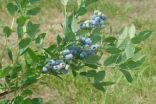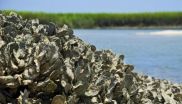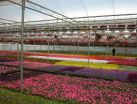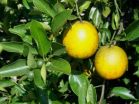Seagulls harbor antibiotic resistant bacteria
2010-09-21
(Press-News.org) Analysis of seagull droppings has revealed that one in ten carry 'superbug' bacteria, resistant to the last-resort antibiotic Vancomycin. Researchers writing in BioMed central's open access journal Proteome Science investigated 57 migratory seagull samples recovered from an island off the coast of Portugal.
Gilberto Igrejas from the University of Trás-os-Montes and Alto Douro, Portugal, worked with a team of researchers to carry out the study. He said, "We used a novel technique called proteomics to detect the maximum number of bacterial proteins which are thought to be connected in some, as yet unknown, way to antibiotic resistance. Our comprehensive description of the proteins that we found may provide new targets for development of antimicrobial agents. This knowledge may also help to identify new biomarkers of antibiotic resistance and virulence factors".
The seagulls studied (Larus cachinnans) are migratory birds that can be found across Europe, including the South East of England. They are opportunistic marine feeders, and will readily eat the food sources provided by humans, especially garbage. It is thought that they may represent one way that antibiotic resistance genes can be spread from place to place. According to Igrejas, "Migrating birds that fly and travel long distance can act as transporters, or as reservoirs, of antibiotic resistant bacteria and may consequently have a significant epidemiological role in the dissemination of resistance".
###
Notes to Editors
1. Proteomic characterization of vanA-containing Enterococcus recovered from Seagulls at the Berlengas Nature Reserve, W Portugal
Hajer Radhouani, Patrícia Poeta, Luís Pinto, Júlio Miranda, Céline Coelho, Carlos Carvalho, Jorge Rodrigues, María López, Carmen Torres, Rui Vitorino, Pedro Domingues and Gilberto Igrejas
Proteome Science (in press)
During embargo, article available here
After the embargo, article available at the journal website
Please name the journal in any story you write. If you are writing for the web, please link to the article. All articles are available free of charge, according to BioMed Central's open access policy.
Article citation and URL available on request at press@biomedcentral.com on the day of publication.
2. Proteome Science is an Open Access, peer-reviewed, online journal considering research in proteomics. The journal is specifically interested in manuscripts that integrate functional or structural proteomic analysis with cell or developmental biology.
3. BioMed Central (http://www.biomedcentral.com/) is an STM (Science, Technology and Medicine) publisher which has pioneered the open access publishing model. All peer-reviewed research articles published by BioMed Central are made immediately and freely accessible online, and are licensed to allow redistribution and reuse. BioMed Central is part of Springer Science+Business Media, a leading global publisher in the STM sector.
ELSE PRESS RELEASES FROM THIS DATE:
2010-09-21
Berkeley — When it comes to conducting complex tasks, it turns out that the brain needs rhythm, according to researchers at the University of California, Berkeley.
Specifically, cortical rhythms, or oscillations, can effectively rally groups of neurons in widely dispersed regions of the brain to engage in coordinated activity, much like a conductor will summon up various sections of an orchestra in a symphony.
Even the simple act of catching a ball necessitates an impressive coordination of multiple groups of neurons to perceive the object, judge its speed and trajectory, ...
2010-09-21
SPRINGFIELD, MO—The American elderberry is showing promise as a profitable commercial fruit crop. Traditionally used for making jelly, juice, and wine, elderberry is becoming increasing important in North America's burgeoning "nutraceutical" industry. Historically, elderberries have mostly been harvested from the wild; researchers have made recently made efforts to select or develop improved cultivars. Increased interest and emerging markets are encouraging scientists to develop improved elderberry cultivars that yield consistent, superior production. Scientists from the ...
2010-09-21
GRIFFIN, GA—Blueberry aficionados will soon have a tasty, colorful new variety for their backyard gardens. Blueberry experts D. Scott NeSmith and Mark K. Ehlenfeldt introduced 'Blue Suede™' in a recent issue of HortScience. The new southern highbush blueberry (Vaccinium hybrid) was released by the University of Georgia's College of Agricultural and Environmental Sciences, the University of Georgia Agricultural Experiment Station, and the U.S. Department of Agriculture–Agricultural Research Service. 'Blue Suede™' is targeted for sales to the home gardener market.
According ...
2010-09-21
WEST LAFAYETTE, Ind. - A Purdue University-led research team has uncovered the chemical components of the adhesive produced by oysters, providing information that could be useful for fisheries, boating and medicine.
A better understanding of oysters' ability to stick together to form complex reefs would help those trying to boost the dwindling oyster population, aid in the creation of materials to keep boat hulls clean without harming the environment, and bring researchers one step closer to creating wet-setting adhesives for use in medicine and construction.
Jonathan ...
2010-09-21
EAST LANSING, MI—When consumers visit garden centers in spring they will most likely buy flowering ornamental plants that are ready for their home gardens. Studies have shown that consumers favor plants that are already in flower rather than those that are "vegetative"—a preference that can present multiple challenges for commercial growers.
To satisfy consumers' wishes, producers of ready-to-flower ornamentals like bedding plants and perennials start growing crops far in advance of the spring buying season, often during the dark and short days of winter. When the days ...
2010-09-21
Dust has been blowing into the Eastern Atlantic Ocean from Africa's Saharan Desert, and a NASA satellite captured some of that dust east of Tropical Storm Julia.
NASA's Moderate Resolution Imaging Spectroradiometer (MODIS) instrument on the Terra satellite captured a visible image of Tropical Storm Julia on Sept. 18 at 13:50 UTC (9:50 a.m. EDT) and noticed a large area of Saharan dust over the Atlantic Ocean, to Julia's east.
On Sept. 20 at 5 a.m. EDT, Julia was still holding on to tropical storm status with maximum sustained winds near 45 mph. Julia was located about ...
2010-09-21
Hurricane Karl made landfall near Veracruz, Mexico on Friday, Sept. 17 and moved inland over Mexico's rugged terrain, which took the punch out of the storm. As Karl was moving into Mexico, NASA aircraft and NASA satellites were gathering data from this storm that jumped from a tropical storm to a Category 3 hurricane the day before.
Karl had maximum sustained winds of 115 mph when it made landfall on Friday afternoon, Sept. 17. That made Karl a Category three hurricane on the Saffir-Simpson scale, and a major hurricane to boot.
On that day, NASA's Genesis and Rapid ...
2010-09-21
LAKE ALFRED, FL—Successful mechanical harvesting of perennial fruit crops requires efficient, economical harvesting systems that do not reduce trees' production life or diminish fruit quality. Most of the world's citrus is now harvested manually, but the use of efficient and lower-cost mechanical harvesting techniques is expected to increase in the next few years, especially in the large citrus plantations in Florida and Brazil. The citrus industry is ramping up efforts to extend the harvest season past June, when the following year's crop becomes large enough to be susceptible ...
2010-09-21
Taiwan experienced a landfall and a soaking from Typhoon Fanapi, and NASA and JAXA's TRMM satellite noted a large area of very heavy rain in the system before it made landfall this weekend. NASA's Aqua and Terra satellites also captured impressive visible images of Fanapi just before the Taiwan landfall, and as it was making landfall in eastern China very early today.
The Tropical Rainfall Measuring Mission satellite known as TRMM captured an image of Typhoon Fanapi's rainfall on Sept. 18 at 0653 UTC (2:53 a.m. EDT) after the typhoon had intensified to 105 knots (~121 ...
2010-09-21
BATON ROUGE, LA—The ancient fig tree, first imported to the United States during the 16th century, thrives in areas of California and the South Atlantic and Gulf Coast areas of the U.S. One of the most popular trees grown in Southern backyards, fig is favored for its versatile fruit and low-maintenance production.
Charles E. Johnson, Ed O'Rourke, and James E. Boudreaux, from the Louisiana State University Agricultural Center in Baton Rouge, introduced a new fig they named "Champagne" in a recent issue of HortScience. According to the report, the new fig performed well ...
LAST 30 PRESS RELEASES:
[Press-News.org] Seagulls harbor antibiotic resistant bacteria







